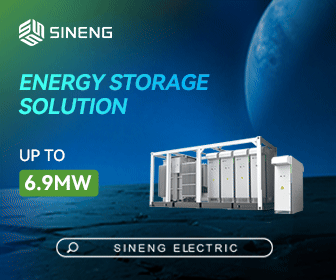Early Days: Lessons the Storage Industry Can Learn from the Solar Sector
Few nascent markets have benefitted as much from the buzz of high-profile aspirational marketing as energy storage. The Tesla Powerwall announcement triggered exuberance that far exceeded the realities of today's marketplace. Most of today's storage products promise a great future but don't yet offer the full suite of customer benefits needed to make them truly viable. As storage solutions emerge that can meet those customer expectations, we expect significant value creation and market growth that will justify even more exuberance.
In a way that only Elon Musk could have, the topic of "behind-the-meter storage" has moved from a utility/grid management conversation taking place in industry journals to a trendy retail-side conversation playing out in New York Times headlines. However, the excitement has grown much faster than the megawatt-hours of behind-the-meter storage actually installed. Residential behind-the-meter energy storage systems deployed since 2013 still only amass to less than 13MWh: that's fewer than one thousand installations in little more than three years, according to GTM Research/ESA. For all its multi-billion-dollar value creation and resulting potential, the battery storage market-especially the residential variety-remains in its early days and has a lot of issues to work out before realizing that potential.
One of the major issues is the fit between the product benefits and the market requirements. Many assumed Tesla brought to market a disruptive break-through product representing a $3,000 solution that backs up an entire home indefinitely and with perfect reliability, runs off green solar power, and pays for itself by trading energy on the grid with a buy-low, sell-high strategy. Although we may see such platforms in the not-too-distant future, this kind of complete residential storage solution is not available today. In reality, storage systems currently available are about double that price, offer limited backup with unknown reliability, and require on-site expert system integration. Solutions will need to come down in price, improve in reliability, and become much simpler to install, configure, and use to truly reach their mass adoption potential.
Many have written about the cost of battery cells and their expected trajectory. While we have nothing to add to that rich dialogue, we do find much less discussion on the other requirements for a successful solution: most notably, simplicity.
On this topic, the emerging residential storage industry could learn some lessons from the past. The residential solar sector has seen a major transformation from the original model of semi-reliable string inverters converting DC energy from the PV panels into grid-usable AC power. In the early days of the solar boom, installers were piecing together modules, inverters, and (on occasion) monitoring software to create a rudimentary home solar solution. This took a lot of time and expertise which kept installation labor and system costs high, and slowed deployment. With the success of module-level power electronics (MLPE), technologies such as microinverters and optimizers, rooftop solar arrays have become smarter, more efficient, more reliable, and easier-to-install systems. The built-in intelligence of module-level monitoring and management has become the residential solar standard.
In short: the solar industry learned that component compatibility is not the same as true system integration. When we look at the emerging storage industry, we see that many first-to-market storage offerings are assemblies of product components, not integrated solutions. Most battery offerings look to third parties to provide the power conversion unit (inverter) and the operating software. These early-to-market products require complex, cross-manufacturer interplay among the inverter, battery, and software vendors. The resultant system is labeled "integrated," when, in fact, the components are compatible, not truly integrated.
To be fully integrated, one must consider all parts of the system: battery hardware, battery inverter, solar modules, solar inverter, balance of system components, operating software, user interface, and the ability to work with other home energy management devices. With most hybrid DC-coupled solar-plus-storage platforms, compatibility does not translate to integration: there is a tradeoff between flexibility and functionality, instead of an approach that maximizes both.
Some manufacturers have taken another route, offering integrated AC-coupled solutions comprising all these elements and have demonstrated considerably faster installation, easier commissioning, and a more satisfying user experience. In the long run, this system-level integration model will likely emerge as the leading solution in this fast-growing market.
The economic case for residential storage is just beginning to emerge in Australia, Germany, Hawaii, and other regions. Market drivers such as innovative time-of-use utility tariffs, restrictive solar power export regulations, and reduced or eliminated feed-in tariffs have begun to move the needle on consumer interest and adoption. GTM Research forecasts the U.S. residential storage sector will soar to 632 MW (1580 MWh) of annual deployments by 2021 and become a billion-dollar market.
However, realizing this potential requires meeting or exceeding the minimal customer requirements outlined above for a truly integrated solution. Once such solutions are in place and these growth forecasts become reality, there will be even more exuberance that will drive a virtuous cycle of growth and product innovation in residential energy storage.

Philip C. Farese, PhD is the vice president, strategy for Enphase Energy.
Enphase Energy | www.enphase.com
*[Data source: GTM Research/ESA U.S. Energy Storage Monitor Q2 2016]
Volume: 2016 November/December









